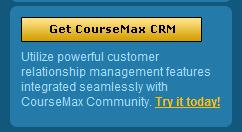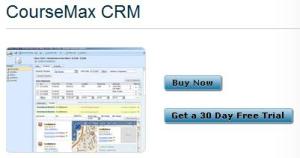
CRM 4.0 Rack in Colocation Data Center
Microsoft released a new version of Update Rollup 2 for Microsoft Dynamics CRM 4.0 on February 8th. The new version fixes some problems with UR2. The issues that were fixed were fairly minor. Unless you were having troubles with a localized version, there weren’t any other major problems that a quick edit of web.config wouldn’t solve.
If the CRM team sticks to the 2 month update cycle, we should see Update Rollup 3 in about month. I’m not really used to this short cycle of updates yet. However, I do like the idea of doing a rollup rather than individual hotfixes. My basic rule of thumb on installing CRM updates is that, if we don’t need it to fix a problem, wait for 3-4 weeks and let everyone else regression-test it (thanks everyone and please keep up the good work). If we are experiencing problems then we’ll test it first in our sandbox and make sure nothing breaks.
We’ll be installing the update to the update in the CourseMax data center this weekend. It’s a pretty involved process. Here is the process we’ll go through:
- Apply the update in the sandbox
- Since our CRM server roles are split up, we’ll have to install it four times)
- Run through the test plan on all four servers
- Apply the update on the production servers
- Six different servers this time
- Run through the test plan again on Production
The test plan involves testing all of the various screens, triggering actions for plug-ins, testing workflows, testing e-mails and queues, and testing all of the external modules that hit the CRM web service, the Deployment Service, and the Discovery Service. Now you can understand why we wait until everyone else finds the problems first. We could test it in a single-role environment but that wouldn’t really do much good because we’d still need to run through the test plan twice in the hosting environment. This is also why I’m not really comfortable yet with the 2 month update cycle. I like to keep current with updates but it is a lot of work. Keep in mind that this is in addition to the testing and updating we do for our own software. Our software consists of all of the plugins, workflows, scripts, sitemap customizations, etc. that make CourseMax CRM handle all the functions you need if you are a Training Organization. If we would have installed the first version of Update Rollup 2 we would have had to go through this whole process twice within a month.
I was thinking about synchronizing the updates to the CourseMax software with Microsoft’s cycle. The problem with doing that is that, if something does go wrong, it will be a nightmare because we won’t know whether it is our software causing the problem, the Microsoft update, or a combination of the two. By the way…In case you were wondering, our sandbox is a QA environment that mirrors our production environment. While it isn’t identical (4 servers instead of 6) to the production environment, it has all of the same server roles and exhibits the same network traffic. Our whole environment is virtualized using VMWare so it was pretty easy to copy it over. We just copied all of the virtual drives brought them up without network, then configured them on a separate VLAN. Since VMWare allows VLAN tagging, it is a completely soft configuration. The sandbox environment actually shares hardware with the production environment. Man I love virtualization…virtual servers, virtual LANs, virtualized storage (SAN). Everything is so much easier and efficient these days.
Here are the links to the new release of Update Rollup 2:
Informational post on the CRM Team Blog
Download Link
The new update fixes 2 problems found with the original update that was released on January 15th. The most common problem I was hearing about is that you could no longer publish workflows after the update if you had a custom web.config file. The fix was to add the following line to web.config in the authorized types section:
<authorizedType Assembly=”mscorlib, Version=2.0.0.0, Culture=neutral, PublicKeyToken=b77a5c561934e089″ Namespace=”System.Globalization” TypeName=”CultureInfo” Authorized=”True”/>
From the CRM Team Blog:
Update Rollup 2 for Microsoft Dynamics CRM 4.0
On 2/8/2008, the CRM Sustained Engineering team released a new version of the Update Rollup 2 packages. The new version of Update Rollup 2 addresses some of the issues that have been noted in the comments for this blog entry.
Including:
Strings in the localized product showing up as garbage or in English.
Customized web.config causing issues after Update Rollup 2 is installed
Customers do not need to uninstall the original Update Rollup 2 packages. The new packages will install over the top. If a customer has not been affected by the issues in the original Update Rollup 2 package they do not need to update to the new version. Customers can install Client, Server, Router Update Rollup 2 in any order…












Filed under: Operations, Troubleshooting | Tagged: Colocation, CRM, Data Center, Hosting, Infrastructure, Microsoft Dynamics CRM, Patching, QA, Sandbox, Servers, Testing, Update Rollup, Updates | Leave a comment »















































